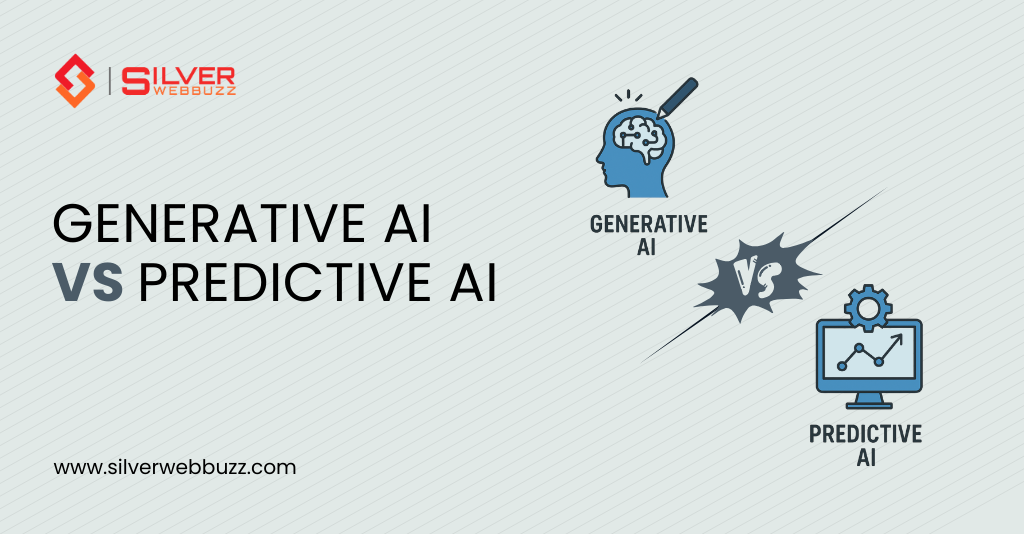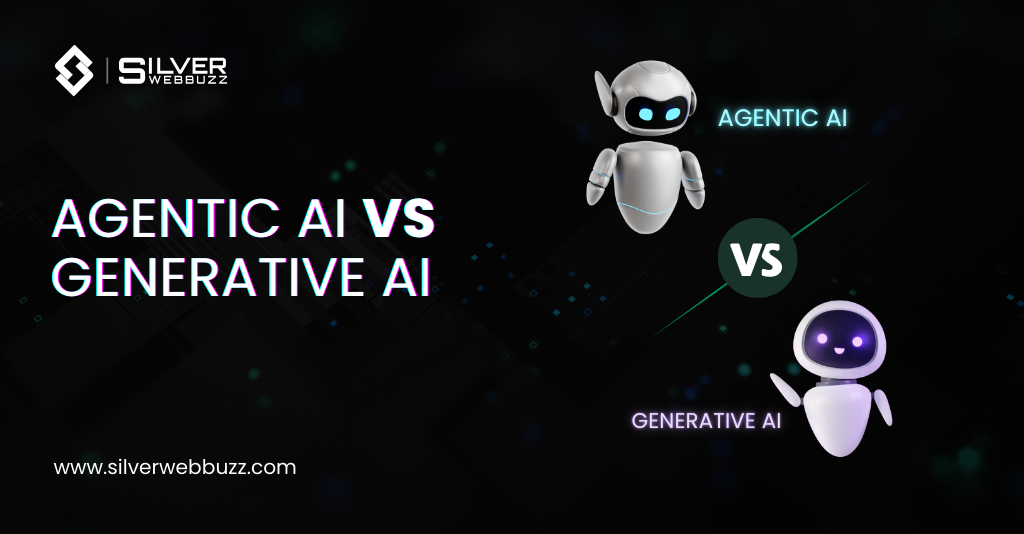The automotive industry is no longer just about mechanical engineering; it’s a revolution driven by software. In the last decade, vehicles have transformed from purely mechanical machines into sophisticated, interconnected, software-driven platforms. Whether it’s the emergence of self-driving capabilities, immersive in-car entertainment systems, predictive maintenance, or seamless over-the-air (OTA) updates, software now fundamentally defines how modern cars function and how drivers interact with them. This evolution has made automotive software development a critical and rapidly expanding field.
In this comprehensive guide, we’ll delve into everything you need to know about automotive software development. We will explore its basics, crucial industry trends, architectural considerations, essential security and safety standards, and future market projections. This article aims to be your definitive resource for understanding this dynamic sector.
Key Takeaways
- Core Functionality: Automotive software development is the backbone of modern vehicles, powering everything from infotainment systems and advanced driver-assistance systems (ADAS) to powertrain management and autonomous driving capabilities.
- Software-Defined Vehicles (SDVs): The industry is rapidly transitioning towards SDVs, where software upgrades are the primary means of enhancing vehicle performance, adding new features, and extending the vehicle’s lifecycle, often making software more valuable than the hardware itself.
- Key Technologies & Standards: Critical technologies include Artificial Intelligence (AI), Machine Learning (ML), telematics, Vehicle-to-Everything (V2X) communication, and adherence to stringent cybersecurity and safety standards like ISO/SAE 21434 and ISO 26262.
- Evolving Business Models: Monetization strategies are shifting towards subscription-based services, data-driven insights, and post-sale software upgrades, creating new revenue streams for automakers.
What is Automotive Software Development?
Automotive software development is the intricate process of designing, building, testing, deploying, and maintaining software applications and systems that are integral to the operation, performance, and user experience of modern vehicles. This encompasses a broad spectrum of software, from the low-level embedded systems that control critical vehicle functions (like engine performance and safety features) to the complex cloud-connected applications that enable advanced driver services and remote diagnostics.
Key Areas within Automotive Software Development:
- Embedded Software for ECUs: Development of software for Electronic Control Units (ECUs) that manage specific vehicle functions (e.g., engine, transmission, brakes, airbags).
- Infotainment and Connectivity: Creating software for in-car entertainment, navigation, communication (like Apple CarPlay and Android Auto), and smartphone integration.
- Advanced Driver Assistance Systems (ADAS) and Autonomous Driving: Developing algorithms for features such as adaptive cruise control, lane-keeping assist, automatic emergency braking, and full self-driving capabilities, heavily relying on AI and ML.
- Powertrain and Battery Management: Especially crucial for Electric Vehicles (EVs), this involves software to optimize energy consumption, manage battery health, and control charging processes.
- Telematics and Data Services: Developing software for vehicle tracking, remote diagnostics, fleet management, and data analytics for predictive maintenance and insurance services.
- Vehicle-to-Everything (V2X) Communication: Building software that enables vehicles to communicate with other vehicles (V2V), infrastructure (V2I), and pedestrians (V2P), enhancing safety and traffic efficiency.
Why Automotive Software Development is Crucial
The modern vehicle is essentially a connected computer on wheels. Software is no longer an accessory but the central nervous system, dictating the car’s intelligence, functionality, and user experience. Without robust, secure, and scalable automotive software:
- Advanced Features are Impossible: Integration of ADAS, autonomous driving capabilities, and sophisticated infotainment systems would be unfeasible.
- Over-the-Air (OTA) Updates Lack Functionality: The ability to update vehicle software remotely for performance enhancements, bug fixes, or new features would be absent.
- Regulatory Compliance Fails: Meeting increasingly stringent global regulations for safety (like ISO 26262) and cybersecurity (like ISO/SAE 21434 and UNECE WP.29) would be impossible.
- Customer Expectations are Unmet: Consumers expect personalized experiences, seamless connectivity, and advanced features, all of which are software-dependent.
Expert Insight: By 2030, software is projected to account for up to 60% of a car’s total value, highlighting its growing importance and the critical need for sophisticated software development.
Benefits of Robust Automotive Software Development
Investing in high-quality automotive software development yields significant advantages:
- Enhanced Safety: Real-time monitoring, predictive hazard detection, collision avoidance systems, and driver alerts directly contribute to safer driving.
- Improved User Experience: Features like intuitive infotainment systems, responsive voice assistants, personalized settings, and advanced navigation systems create a more enjoyable driving experience.
- Better Vehicle Efficiency: Optimized software can manage powertrain, battery, and energy consumption more effectively, leading to improved fuel economy and extended EV range.
- Revenue Growth Opportunities: New business models, such as subscription services for features (e.g., heated seats, advanced driver assist), app marketplaces, and data monetization, open up significant revenue streams.
- Regulatory Compliance and Certification: Adherence to standards like ISO 26262 for functional safety and UNECE WP.29 for cybersecurity ensures vehicles meet legal requirements and safety mandates.
- Extended Vehicle Lifespan and Value: OTA updates can refresh features and improve performance over time, keeping vehicles modern and valuable for longer.
Key Applications of Automotive Software
Automotive software is the enabler for a vast array of vehicle functionalities:
- Infotainment Systems: The core of the in-car digital experience, including media playback, navigation, climate control, and connectivity features like Apple CarPlay and Android Auto.
- Telematics: Systems that enable vehicle communication for services like fleet tracking, remote diagnostics, emergency calls (eCall), and usage-based insurance.
- ADAS & Autonomy: Software powers critical safety and convenience features such as adaptive cruise control, lane-keeping assist, blind-spot monitoring, parking assist, and the complex algorithms for fully autonomous driving.
- Powertrain & Battery Management Systems (BMS): Especially vital for EVs, this software optimizes electric motor control, battery charging, thermal management, and energy regeneration.
- V2X Communication: Software that facilitates real-time communication between vehicles and their surroundings, crucial for traffic management, accident prevention, and smart city integration.
- Body Electronics: Software controlling non-critical vehicle functions like power windows, door locks, lighting, and interior climate control.
Industry Trends: The Rise of Software-Defined Vehicles (SDVs)
The automotive industry is undergoing a paradigm shift towards Software-Defined Vehicles (SDVs). This means the vehicle’s functionality, features, and performance are increasingly determined and enhanced by its software, rather than solely by its hardware.
Key characteristics of the SDV trend include:
- Hardware as a Platform: The underlying hardware (sensors, processors, chassis) becomes a stable platform, while software updates continuously improve and add new capabilities over the vehicle’s lifetime.
- Over-the-Air (OTA) Updates: Automakers are increasingly relying on OTA updates to deliver new features, performance improvements, and critical security patches remotely, mirroring the smartphone experience.
- Virtualization and Simulation: Increased use of virtual testing and simulation tools (like MATLAB/Simulink) to accelerate development cycles, reduce costs, and improve the accuracy of software validation before physical deployment.
- New Entrants and Disruptors: Agile startups like Tesla, Rivian, and Lucid have set new benchmarks for software integration and user experience, pushing traditional Original Equipment Manufacturers (OEMs) to innovate rapidly.
- Focus on Modularity and Reusability: Embracing standardized architectures like AUTOSAR allows for modular software design, promoting reusability across different vehicle models and generations, which reduces development costs and time-to-market.
- Data-Driven Development: Leveraging vehicle data collected from the fleet to inform future software updates, identify potential issues, and enhance user experiences.
Types of Automotive Software
Automotive software can be broadly categorized based on its function and operating environment:
- Embedded Systems Software: This is the low-level software that runs directly on microcontrollers within ECUs. It’s responsible for real-time control of vehicle functions, safety systems, and sensor data processing. Examples include engine control software, brake-by-wire systems, and airbag deployment logic.
- Application Software: This category includes the software that users directly interact with, such as infotainment systems, navigation apps, and vehicle diagnostic applications accessible via a smartphone.
- Middleware: Software that acts as a bridge between the operating system and applications, or between different software components. AUTOSAR (AUTomotive Open System ARchitecture) is a prime example of a middleware standard that provides a standardized architecture for automotive software.
- Cloud-Based Services: Software that runs on external servers to provide services like remote diagnostics, over-the-air updates, fleet management platforms, and advanced data analytics.
Automotive Software Architecture & Tools
A well-defined software architecture is crucial for managing complexity, ensuring scalability, and facilitating modularity in automotive software development.
Typical Architecture Layers:
- Hardware Layer: Encompasses the physical components of the vehicle, including sensors (cameras, radar, lidar), actuators, ECUs, and the vehicle’s internal communication networks (CAN, Ethernet).
- Middleware Layer: Provides standardized communication protocols, operating system services, and hardware abstraction. AUTOSAR is a dominant standard in this layer, offering both Classic (for deeply embedded systems) and Adaptive (for high-performance computing) platforms.
- Application Layer: Contains the software components that provide specific functionalities, such as infotainment, navigation, ADAS algorithms, and powertrain control.
Popular Development Tools and Frameworks:
- MATLAB/Simulink: Widely used for model-based design, simulation, and automatic code generation for control systems, ADAS, and autonomous driving algorithms.
- Vector CANoe: A comprehensive tool for development, testing, and analysis of automotive ECUs and networks. It supports simulation, diagnostics, and integration testing across various vehicle bus systems (CAN, LIN, FlexRay, Ethernet).
- QNX: A real-time operating system (RTOS) widely adopted for safety-critical automotive applications, particularly in infotainment, digital cockpits, and ADAS due to its reliability and security features.
- Perforce Helix ALM: A suite of tools for application lifecycle management, essential for managing requirements, version control, and testing in complex automotive software projects.
- AUTOSAR: Not just middleware, but also a framework that guides software architecture and component design, promoting standardization and reusability.
Software Development Lifecycle (SDLC) in Automotive
The automotive software development process is highly structured and rigorous, often following a V-model approach to ensure quality and safety.
- Requirement Analysis: Defining precise functional, non-functional, safety, and cybersecurity requirements based on market needs, regulations, and stakeholder input.
- System Architecture Design: Creating the high-level blueprint of the software system, defining layers, modules, and their interactions, often guided by standards like AUTOSAR.
- Coding: Implementing the software design using appropriate programming languages. Common languages include C/C++ for embedded systems, Python for scripting and AI, and Java for some application-level software. MISRA C compliance is often a key requirement for safety-critical code.
- Testing and Validation: A multi-stage process including: Unit testing focuses on verifying the functionality of individual software modules to ensure each one performs as expected in isolation. Integration testing is followed by checking that different software components interact and work together correctly. System testing then validates the complete software system against the defined requirements, ensuring overall functionality and performance. Finally, Hardware-in-the-Loop (HiL) and Software-in-the-Loop (SiL) testing are used to evaluate software in more realistic scenarios, either by running it on simulated hardware or by integrating real hardware into a simulated environment, enabling accurate assessment before deployment.
- Deployment: Distributing the software to vehicles, primarily through Over-the-Air (OTA) updates, but also via dealership installations.
- Maintenance and Updates: Ongoing support, bug fixing, performance tuning, and feature enhancements through subsequent software releases and OTA updates.
Cybersecurity and Functional Safety
Given the critical nature of automotive systems, adherence to robust safety and cybersecurity standards is non-negotiable.
- ISO 26262 (Functional Safety): This international standard provides guidelines for ensuring the safety of electrical and electronic systems in road vehicles. It defines a lifecycle for developing safety-critical functions, using Automotive Safety Integrity Levels (ASILs) to classify risks and required safety measures.
- ISO/SAE 21434 (Cybersecurity Engineering): This standard addresses the cybersecurity of road vehicles, covering the entire lifecycle from concept to decommissioning. It aims to establish a common understanding of cybersecurity requirements and promote a “security by design” approach throughout the supply chain.
- UNECE WP.29: A set of global United Nations regulations that address vehicle safety and cybersecurity, influencing international automotive standards and compliance requirements.
- Best Practices: These include secure coding practices, regular penetration testing, supply chain security audits, implementing intrusion detection systems, and robust vulnerability management throughout the vehicle’s lifecycle.
Technical Challenges in Automotive Software Development
Developing automotive software presents unique challenges:
- Complexity of Hardware-Software Integration: Ensuring seamless and reliable interaction between sophisticated software and diverse hardware components (sensors, ECUs, actuators) is a major hurdle.
- Long-Term Support and Updatability: Vehicles have a much longer lifespan (15-25 years) than typical consumer electronics. Providing long-term software support, maintenance, and security updates over this period is a significant challenge.
- Legacy System Compatibility: Integrating new software and architectures with older ECUs and systems in existing vehicle platforms can be complex.
- Real-time Performance and Determinism: Many automotive functions require precise timing and predictable responses, demanding real-time operating systems and efficient software design.
- Cybersecurity Threats: As vehicles become more connected, they become more vulnerable to cyberattacks, requiring constant vigilance and robust security measures.
- Managing the 3G Sunset Impact: The discontinuation of 3G networks has rendered many older connected car services obsolete, creating a need for hardware and software upgrades or replacements, as seen with VW’s Car-Net.
Business Models and Monetization
The shift to SDVs is enabling new business models and revenue streams for automakers:
- Subscription Services: Offering features or functionalities on a recurring subscription basis (e.g., advanced driver assistance, premium navigation, enhanced connectivity, comfort features like heated seats).
- Data Monetization: Leveraging aggregated and anonymized vehicle data for insights into traffic patterns, predictive maintenance, urban planning, or personalized insurance, while respecting privacy regulations.
- App Marketplaces and Ecosystems: Creating platforms where third-party developers can offer their applications and services for vehicles, similar to smartphone app stores.
- Software Upgrades for Performance: Offering paid upgrades that enhance vehicle performance, such as increased power output for EVs, through software modifications.
- Custom Software Platforms: Developing proprietary platforms that integrate various services and allow for customization and future expansion, such as GM’s Ultifi or Toyota’s Arene.
Case Studies in Automotive Software Innovation
Examining real-world implementations provides valuable insights:
- Toyota Arene: Toyota’s unified software development platform designed to enable modern software practices, modularity, and faster innovation for future vehicles. It aims to create a more programmable vehicle experience and supports continuous improvement through data.
- GM Ultifi: General Motors’ end-to-end software platform built on their Vehicle Intelligence Platform (VIP). Ultifi aims to deliver frequent OTA updates, enable new features, apps, and services, and open the ecosystem to third-party developers, transforming the vehicle ownership experience.
- VW Car-Net 3G Sunset: This case illustrates the challenges of hardware obsolescence and the necessity for robust, long-term support. The discontinuation of AT&T’s 3G network impacted many VW models, leading to the loss of connected services and highlighting the importance of planning for network evolution and providing solutions for affected customers.
Future Outlook for Automotive Software Development
The automotive software landscape is poised for continued rapid evolution:
- Dominance of Software-Defined Vehicles: SDVs will become the norm, with software dictating vehicle capabilities, user experience, and even value retention.
- AI and Machine Learning Integration: AI/ML will become even more critical for autonomous driving, predictive maintenance, personalized driver assistance, and enhanced in-car experiences.
- Enhanced Cybersecurity and Safety Focus: As vehicle connectivity increases, cybersecurity will remain a paramount concern, driving continuous advancements in security protocols and compliance with standards like ISO/SAE 21434. Functional safety (ISO 26262) will continue to be a cornerstone of development.
- Increased Adoption of Modular Architectures: Standards like AUTOSAR will continue to shape software development, promoting interoperability, reusability, and efficient updates.
- Next-Generation Connectivity: The integration of 5G and beyond will enable faster, more reliable V2X communication, paving the way for more advanced autonomous systems and real-time data services.
- Evolving Monetization Strategies: Automakers will increasingly explore diverse revenue models based on software and data.
Extended Software Lifecycles: Managing software over the long lifespan of vehicles will require innovative approaches to updates, maintenance, and security patching.
Shape the Future of Automotive Software with Silver Webuzz
Silver Webuzz, a leading artificial intelligence development company, is committed to redefining the future of mobility through innovative and high-performance automotive software solutions. Leveraging the latest advancements in AI and cutting-edge technology, our skilled team develops intelligent software that enhances vehicle efficiency, safety, and connectivity.
We prioritize exceptional user experiences by designing intuitive interfaces and ensuring seamless integration for both drivers and passengers. Every solution we deliver is built with a focus on reliability, scalability, and long-term performance, enabling our clients to stay ahead in the rapidly evolving automotive landscape.
Collaborating with forward-thinking industry leaders, Silver Webuzz continues to push the limits of automotive innovation. Together, we aim to build smarter, safer, and more connected vehicles that make every journey seamless, efficient, and enjoyable.




